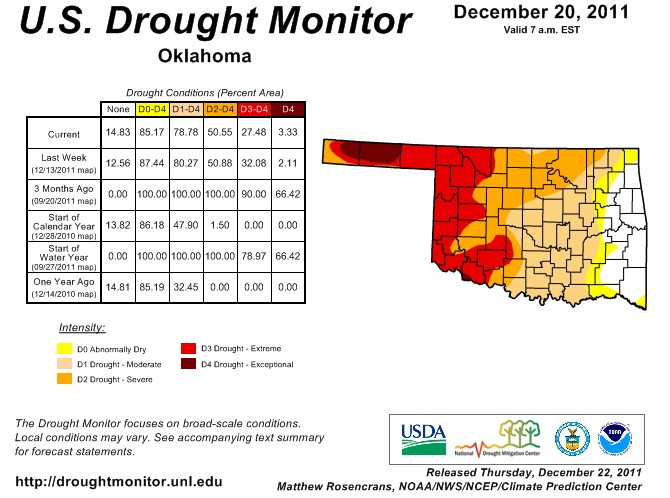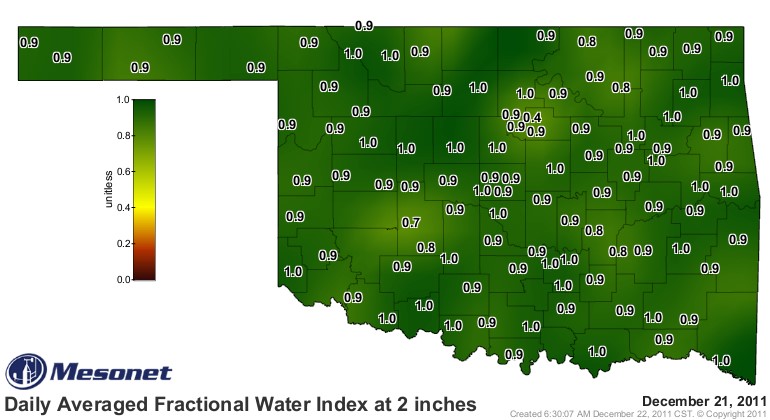
Agricultural News
Latest Drought Monitor Shows Smaller Footprint for Worst Drought Levels in Oklahoma
Fri, 23 Dec 2011 05:03:12 CST
 Oklahoma's continuing wet ways have helped the state reduce its drought designation once again. The U.S. Drought Monitor map released this morning shows about 27% of the state now in the two worst intensity categories (exceptional and extreme), down about 5% from last week. Only 3% of that 27% is the worst drought category of exceptional- and all of that is in the Oklahoma Panhandle- which now has a blanket of snow that is gradually melting and will provide some desperately needed moisture.
Oklahoma's continuing wet ways have helped the state reduce its drought designation once again. The U.S. Drought Monitor map released this morning shows about 27% of the state now in the two worst intensity categories (exceptional and extreme), down about 5% from last week. Only 3% of that 27% is the worst drought category of exceptional- and all of that is in the Oklahoma Panhandle- which now has a blanket of snow that is gradually melting and will provide some desperately needed moisture.
The graphic above shows the latest Oklahoma Drought Monitor map- and shows conditions that are remarkably better than in mid September, when 66% of the state was painted with exceptional drought intensity. To see the full US Drought Monitor Map that was released on Thursday morning- click here.
The statewide average precipitation total for December now stands at 2.33 inches according to data from the Oklahoma Mesonet. That total will continue to increase regardless of further precipitation as the snowpack currently covering most of the Panhandle melts.
Topsoil moisture is in good shape across the entire state according to the Mesonet's sensors at 2 inches. (That graphic is below) The dryness is still showing up in western Oklahoma and the Panhandle down to 24 inches, however.
Gary McManus, Associate State Climatologist for the Oklahoma Climatological Survey adds that "Hopefully that moisture profile in the Panhandle will improve with further melting of the snow. The lack of response to lakes in western Oklahoma remains a concern as well. The reservoir at Ft. Supply is still at 68% capacity and Canton Lake, a secondary water source for Oklahoma City, is at a miserable 28% of capacity. Drought and water released to OKC have significantly drained that lake's level over the last several months. Lake Altus, a primary irrigation source for southwestern Oklahoma's cotton crop, is at 18% of capacity, signaling a desperate need for further rains in that area.
"Lakes in eastern Oklahoma have either filled or continued to fill. Lake Eufaula is now at 90% of capacity. Lake Skiatook remains a bit low at 64% of capacity."

WebReadyTM Powered by WireReady® NSI
Top Agricultural News
More Headlines...



















